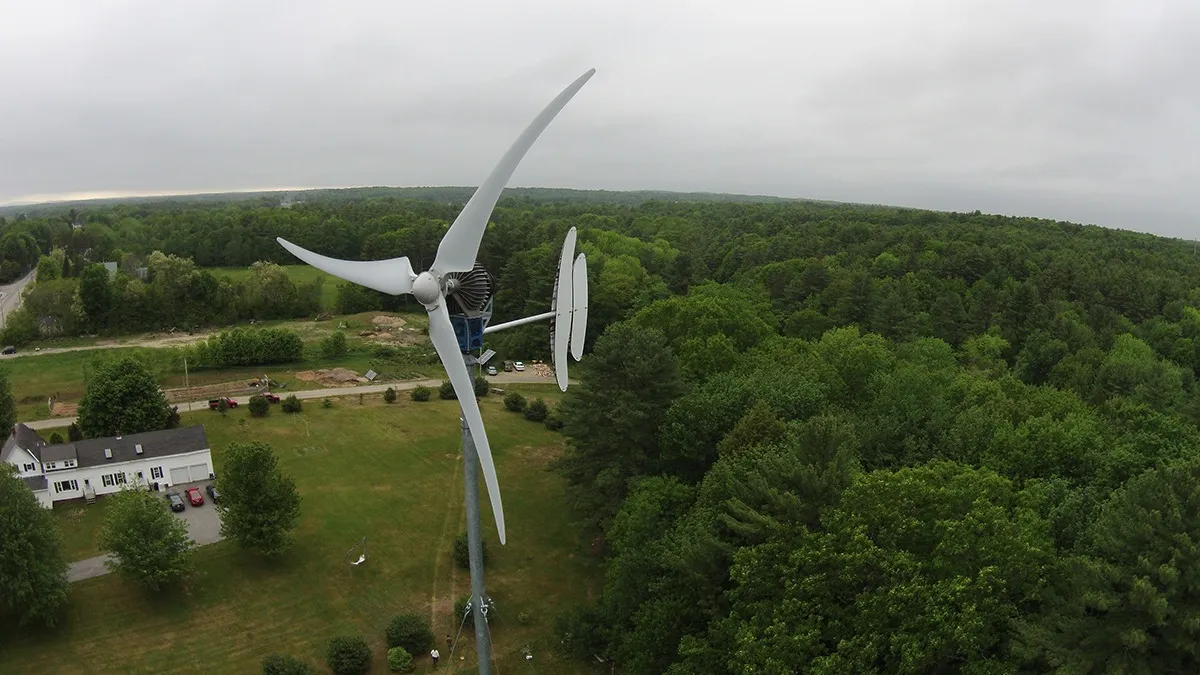Dive Brief:
- Distributed wind resources ranging from single wind turbines powering a private home, to community installations of up to 1 MW in size, could add nearly 1,400 GW to the U.S. power grid, more than half of U.S. current annual electricity consumption, according to a new analysis from the National Renewable Energy Laboratory.
- Across multiple scenarios modeled by NREL, the total distributed wind generation that could be profitably deployed declines by 2035 on account of numerous state and federal incentives that are expected to expire in that time frame.
- Favorable government policy is the single largest factor influencing how much distributed wind generation could be installed, according to Eric Lantz, a group research manager at NREL and one of the authors of the study.
Dive Insight:
Private and community-based wind generation could represent a surprisingly large, relatively untapped energy resource in the United States — but the size of that potential could be severely limited by government policy, according to the latest distributed wind energy futures study from NREL.
Profitable behind-the-meter wind applications — which could offset energy use at a home or business in a similar manner as solar— could hypothetically generate as much as 919 GW of electricity if it were installed this year, according to NREL’s geospatial and economic analysis. Front-of-meter distributed wind energy could add another 474 GW.
However, the potential opportunity declines in the future; only 933 GW of distributed wind generation would be economically viable in 2035 if current policies such as the investment tax credit are allowed to expire, NREL researcher Kevin McCabe said during a Tuesday morning webinar.
“It’s really stark how big an impact policy has on economic potential and a technology’s ability to compete,” Lantz agreed.
By comparison, Lantz said, relaxing rules regarding where wind turbines could be sited would have a minimal impact on the total distributed wind generation that could be installed in the U.S. NREL’s model indicated that less restricted siting rules would add 30 GW in potential behind-the-meter wind capacity. Extending the investment tax credit, on the other hand, would add nearly 700 GW in potentially profitable capacity.
The NREL analysis only evaluated the potential for economic viability; it did not take into account how much would actually be installed by U.S. residents and businesses because behavioral science was outside the scope of the study, Lantz noted.
The study also determined that while there is substantial potential for wind installations to be deployed at both residential and commercial locations, U.S. agricultural lands represent the best opportunity for distributed wind generation. At least 70% of the potential generation identified in the study would be located on agricultural lands, Lantz said.













